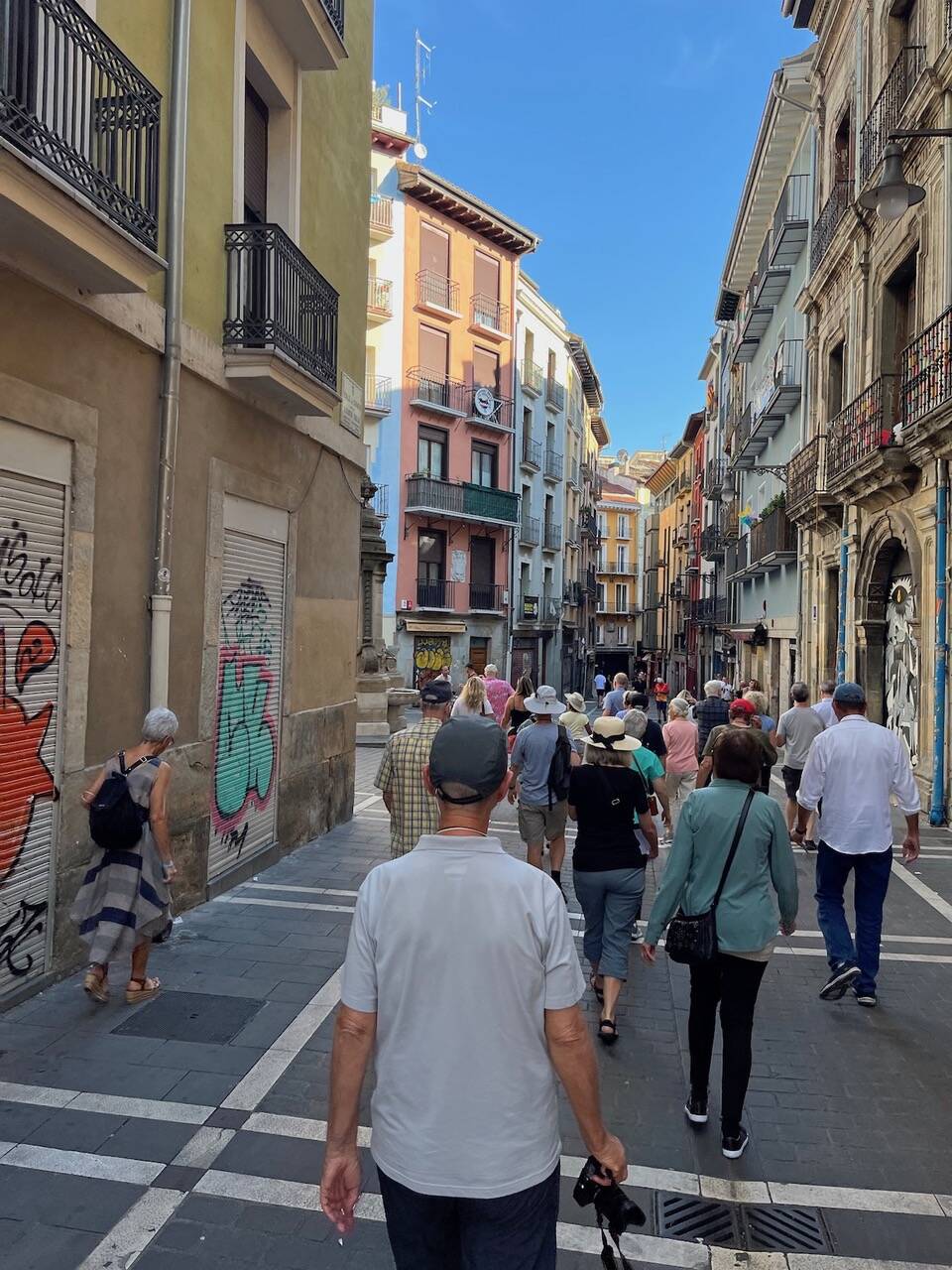I’m just back from two weeks touring the Basque region of France and Spain, walking narrow streets crammed with locals and tourists, hearing a loud buzz of conversations in several languages at once, dodging baby carriages and delivery carts, and being greeted by lots of smiles and eye contact.
More than once I flashed back to some famously narrow streets right here on our Rock that are similarly crammed with people: Pioneer Way in Oak Harbor, First Street in Langley and Front Street in Coupeville. But I was struck by some differences. There is not nearly as much human interaction between locals and tourists on the Rock as there was in Basque Country. In fact, a lot of us Rock Dwellers often avoid those streets when they are most crammed with tourists: I confess that I am among them.
Second, perhaps because of all our divisions, fears and mistrusts, we seem to be much stingier with our smiles and eye contacts on our crammed streets. People just pass by each other without any apparent recognition.
Third, unlike Basque Country, I rarely see local families with kids strolling our narrow streets and almost never with a baby in a carriage. That would really jam up those narrow Rock sidewalks, wouldn’t it?
I wouldn’t say we are less friendly, but we are less willing to mingle and talk with visitors — which after all are as important to our economy as those tourists are to Basque Country.
To be sure, there are a lot reasons why the streets I just visited seemed warmer and friendlier than ours. It was late summer and daylight still lit the streets until 9 p.m. Families in that area live in much smaller places than we do. A typical apartment for a family of four might be less than 1,000 square feet. Not much room to spread out. And, perhaps most importantly, most people there have no air-conditioning. No wonder most families go for long strolls almost every night. And since there are no cars parked on these narrow streets there is a lot more strolling room.
Basque Country’s population is very diverse, including Muslims, immigrants from Africa and people from all over the world. Everyone speaks at least two languages, which you hear all around as you walk along.
Equally important, the crammed narrow streets there are lined with bars and places to eat. Some are formal restaurants but most are just a place to stand or sit at a counter, drink a beer or glass of wine and try some of the local food treats.
Most bars have a row of sandwich-like treats that one peruses while waiting for a drink. Typically, one then picks out a couple of the treats, which are served on a small plate with no fork. Finger food, all made by hand on the premises.
In the rest of Spain this bar food is called tapas. But in Basque country it is called pintxos (pronounced pinch-ohs). And this unique bar food gave me a lot of opportunities to mingle and talk with locals as I tried to figure out what was in all of these pintxos.
“What’s that on the slice of baguette?” I asked a man in a Pamplona bar. “It has some cream cheese on it, but what are those things on top that look like worms?”
“Baby eels,” he responded. “Locally harvested. Please try!”
Once I put out of mind what I was eating, I have to admit it was pretty tasty.
Feeling brave, I then tried smoked octopus on a split croissant. Then mussels in a dill sauce on a baguette. I asked a local if she had heard of Penn Cove mussels.
“No,” she said. “Our mussels come from the Atlantic which is a few kilometers from here.” Of course, I then pulled out my phone to show her where Penn Cove is. All in the interest of building international understanding.
After pintxos, our next stop was usually for an espresso and something sweet — almost always chocolate of some variety. And the conversations then ensued with locals over which local chocolate treat is the best.
I’m left wondering if our narrow streets on the Rock might benefit from some local version of pintxos and chocolate in bars and cafes where you stand around and talk with whoever is also there. It might even relieve some of the complaints we hear about not enough places to eat.
Harry Anderson is a retired journalist who worked for the Los Angeles Times and lives in Central Whidbey.


